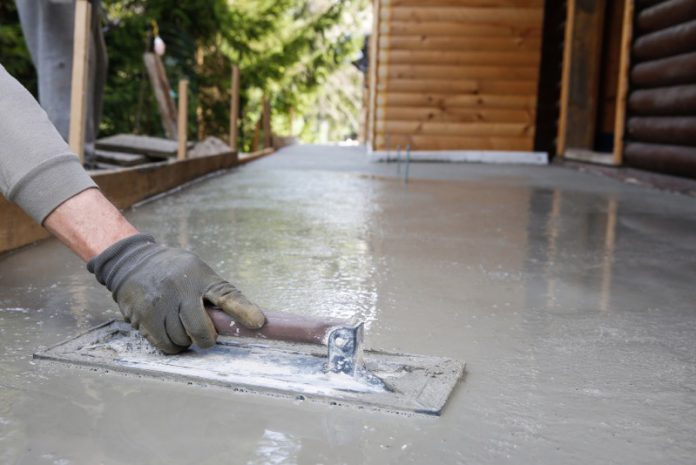Floor screeds are an essential part of many new home projects. They are a big step towards your rooms looking more like finished areas. Floor screeds level out your floor structures to have an even base to apply tiling or floorboards or install underfloor heating.
You might not see your floor screed after everything has been installed, but that doesn’t mean that it’s not essential to make the right choices at this stage of your project.
Traditionally, a cement screed would be used for most screeding projects. But nowadays, Liquid or flowing screeds have gained in popularity. So today, we’re looking at the pros and cons of different types of screeding so you can decide whether you want to install Liquid Screed in Reading in your own home.
Do I Need a Floor Screed?
You don’t have to lay down floor screed, and not all floors require it. In addition, floor screeds don’t add to the structure of your home. In garages, for example, it would be common to lay floorboards directly on top of thick, insulating sheets instead.
Although it is an additional expense, so many homes use floor screeds because they level uneven floors. Using precast concrete beams and block floors, modern floors can cause a distinct camber. This unevenness is a significant problem when you want to lay floor finishes, like tiles.
Screeds also offer significant advantages when laying underfloor heating popes because the material can absorb and radiate the warmth to distribute it evenly underneath your floor.
Sand/Cement Floor Screed
Sand and cement screed is the more traditional type of screed. It is mixed from one part cement to three parts sharp sand and displays a relatively dry and almost powdery consistency.
In the past, this screed used to be mixed on-site. Nowadays, many construction companies order ready-mixed screeds in lorries. These ready mixes also come with retardants that delay the setting time, allowing a single load of screed to last all day.
Pros of Sand/Cement Floor Screed
- Cement Floor Screed, whilst old-fashioned, remains cheap to produce
- Contractors and DIYers alike can prepare this screed quickly on-site, even without prior experience.
- Cement screeds require little preparation apart from taping joints between the insulation boards.
- Sand/cement screeds lend themselves to the formation of sloping floors in wet rooms. This is an application liquid screed cannot provide.
- For smaller flooring areas, cement screed is much more affordable. It is less expensive than liquid screeds in general, making it the better option when you want to screed a small, lower-priority area.
Cons of Sand/Cement Floor Screed
- Sand/Cement floor screed might have a patchy quality. The finish can be uneven, making it more prone to crack.
- If you end up with uneven flooring because of the cement floor screed, you will need a self-levelling compound before you can tile the floor.
- Hand-mixed sand/cement isn’t ideal for underfloor heating. It is pretty thick and harbours pockets of air, which detriment the heat distribution.
Pumped Anhydrite Floor Screed / Liquid Screed
Liquid screed flooring is rapidly becoming a popular alternative to traditional sand/cement screed. The key ingredient of these pumped screeds is anhydrite, also referred to as calcium sulphate or gypsum.
The dry, anhydrous calcium sulphate is composed of recycled content, which forms gypsum when mixed with water. This, in turn, can replace the conventional cement as a binder. However, even cement is making its way back into liquid screeds.
Liquid screeds do a better job of self-levelling and filling all cracks and pockets, making them well-suited to underfloor heating. In addition, they are quicker to apply because the wet mixture just needs to be pumped onto the whole floor. Suppose you choose to install Liquid Screed in Gloucestershire. In that case, you can also expect a drying time of only 48 hours before you can traffic the area again.
Pros of Liquid Screed
- Pumped liquid screeds are self-levelling and self-curing, creating a pleasant and level finish.
- Liquid screed is usually applied by approved, specialist contractors like UK Screeds LTD, ensuring professional results every time.
- Liquid Screed can be applied at thin depths such as 35mm, making it a cost-effective solution for floors that only need a little levelling.
- Liquid Screed is about 20 times as quick to lay as traditional cement screeds, saving time and labour.
- Liquid Screed is immensely well-suited to UFH because it envelopes the pipes entirely and eliminates all voids.
- Liquid screed is much less prone to shrinkage than sand/cement, which makes it compatible with large stone tiles that risk breakages over shrinkage.
Cons of Liquid Screed
- Liquid screed is more expensive than traditional sand/cement. However, this is easily made up for how thinly you can layer the screed and how much time it saves during its application!
- Once you have laid liquid screed, it needs to be sanded and primed before applying floor coverings.
- It’s not always worth getting in Liquid Screed for small, low-priority areas as it requires professional assistance. Liquid Screed is not well-suited to DIY.
Curious if Liquid Screed might be the right solution for your next home project in the Midlands? Get in touch with us at UK Screeds LTD to learn more about the modern and improved floor screeds we provide.

